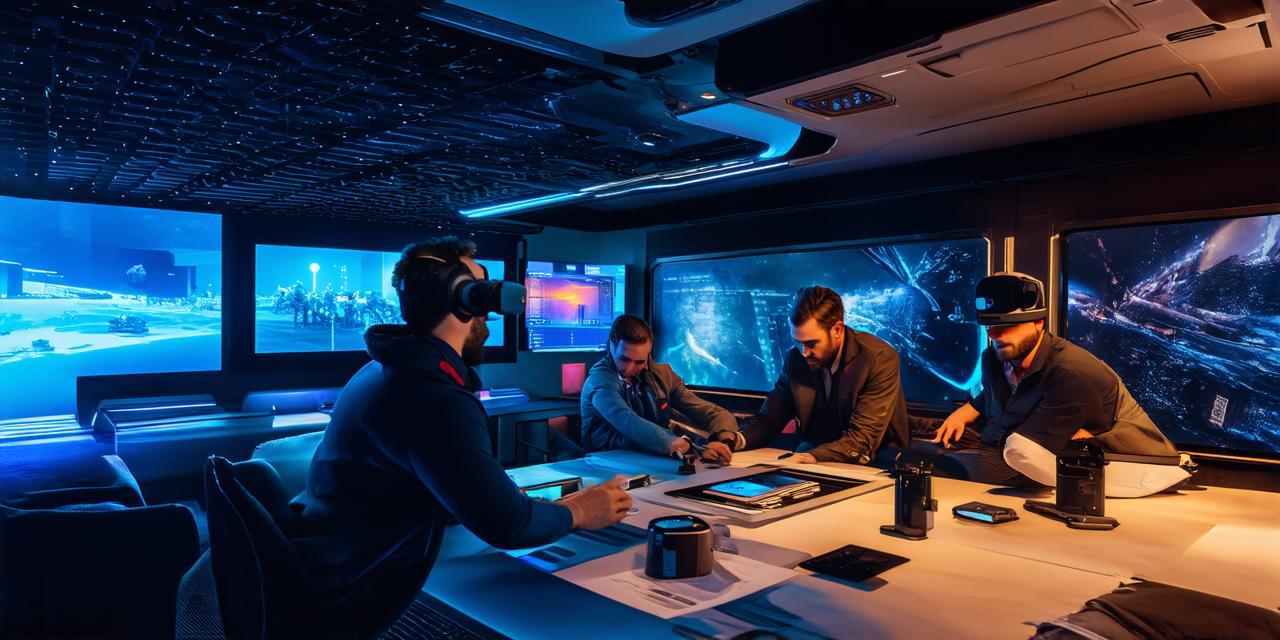What is AR and VR?
AR and VR are immersive technologies that allow users to experience a digital world overlaid on the real world or a completely virtual environment. AR creates an interactive, 3D overlay of digital content on top of the real world, while VR provides a fully immersive, 360-degree digital environment. Both technologies have the potential to transform industries and improve user experiences.
Key features of AR and VR development:
- Interactivity: AR and VR enable users to interact with digital content in real-time, creating a more engaging and immersive experience. This feature is particularly useful in gaming, where players can interact with virtual objects and environments in a way that was previously impossible.
- 3D visualization: Both technologies allow for the creation of realistic 3D visualizations that can be viewed from any angle. This feature is particularly useful in education, where students can explore complex concepts and ideas through interactive 3D models.
- Motion tracking: AR and VR use advanced motion tracking technology to track user movements, enabling users to interact with digital content in a natural way. This feature is particularly useful in healthcare, where patients can use VR to simulate real-life scenarios and practice physical therapy movements.
- Head-mounted displays (HMDs): AR and VR require HMDs, which provide a fully immersive experience by blocking out the real world. This feature is particularly useful in gaming, where players can enter a completely virtual environment and forget about the real world.
- Software development: Both technologies require specialized software development skills, including game engines, 3D modeling, and programming. This feature is particularly useful in healthcare, where developers can create customized VR experiences for specific patient needs.
Advantages of AR and VR development:
- Improved user experiences: AR and VR can create highly engaging and immersive experiences that can improve user retention and satisfaction. For example, a customer could use AR to virtually try on clothes or see how furniture would look in their home before making a purchase.
- Enhanced productivity: AR and VR can be used for training and education, enabling users to learn new skills in a more interactive and effective way. For example, a pilot could use VR to practice flying techniques without risking real-life danger.
- Cost savings: By reducing the need for physical prototypes, AR and VR can help companies save money on product development. For example, a car manufacturer could use VR to test and refine car designs before building physical prototypes.
- Increased efficiency: AR and VR can enable teams to work together more effectively by providing real-time visualizations of complex projects. For example, an architect could use AR to visualize a building design in real-time and make changes on the fly.
- Innovation: AR and VR offer new possibilities for innovation, enabling companies to create unique and compelling experiences that differentiate them from competitors. For example, a fashion brand could use AR to create interactive fashion shows that allow customers to see how clothes would look on them in real-time.
Limitations of AR and VR development:
- Cost: AR and VR technology can be expensive, with high-end HMDs and specialized software development skills required for development. This can be a barrier for small businesses or startups that may not have the resources to invest in this technology.
- Technical limitations: AR and VR are limited by technical constraints such as processing power and bandwidth requirements. This can limit the quality of the visualizations and the interactivity of the experiences.
- User comfort: Some users may experience motion sickness or discomfort when using VR, which could limit its effectiveness in certain applications.
- Privacy concerns: As with any technology, there is a risk of sharing sensitive data with developers and potential misuse of data.
- Dependence on technology: As with any technology, there is a risk of becoming too dependent on AR and VR, which could limit human interaction and creativity.
Conclusion:
AR and VR development offer exciting possibilities for improving user experiences, enhancing productivity, and enabling innovation. While there are limitations and challenges associated with these technologies, they have the potential to transform many industries and create compelling new experiences. As AR and VR continue to evolve, we can expect to see even more creative and innovative uses of these technologies in the future. However, it is important for businesses to carefully consider the costs, technical limitations, user comfort, privacy concerns, and dependence on technology before investing in AR and VR development.
